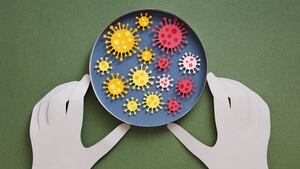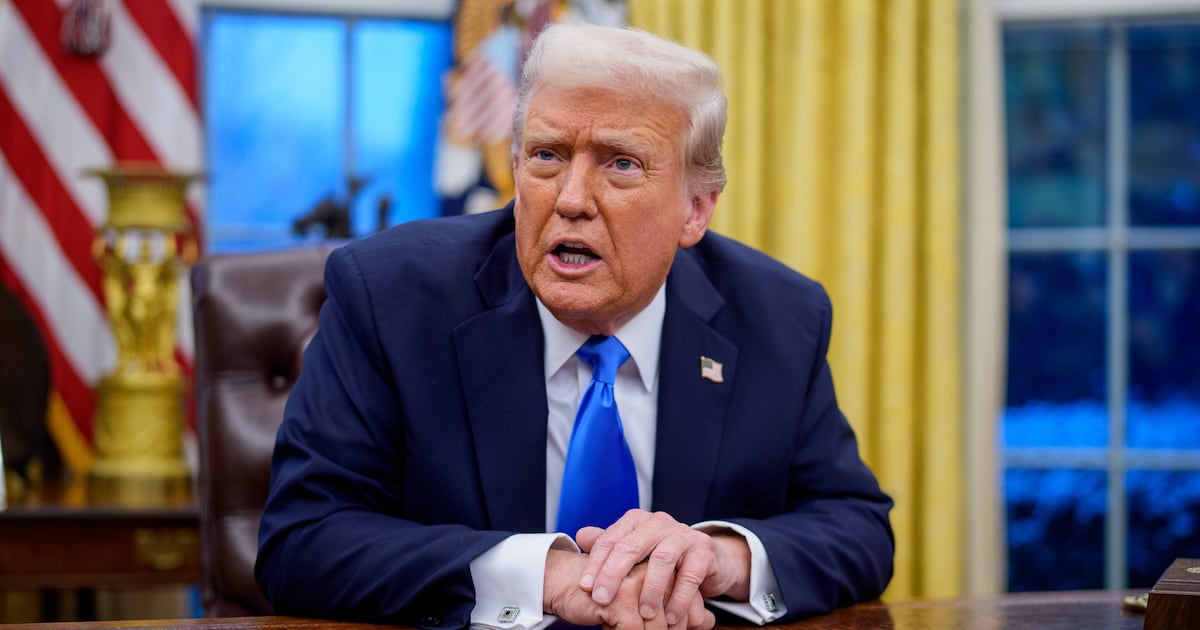The new novel coronavirus vaccine from Johnson & Johnson is easy to ship and store and requires just one dose, making it a potentially powerful tool for solving one of the most vexing problems in the government’s desperate, uneven campaign to inoculate 200 million Americans: equity.
While more and more doses of the three vaccines that the U.S. Food and Drug Administration has approved for emergency use so far are available every day, experts say not enough jabs are reaching the most vulnerable Americans—in particular, people of color who are historically underserved by the country’s patchwork health system.
Welcome to Rabbit Hole, where we dive deep on the biggest story. It’s for Beast Inside members only. Join up today.
“We’re still having problems with race, for sure,” Georges Benjamin, director of the American Public Health Association in Washington, D.C., told The Daily Beast.
There are proven methods for vaccinating underserved racial groups—in particular, Blacks and Hispanics. And the easy-to-handle Johnson & Johnson vaccine could slot neatly into those strategies. But there are worrying signs that authorities aren’t prioritizing people of color as they begin doling out tens of millions of doses of the new vaccine.
The first two vaccines to get FDA approval—from Moderna and Pfizer—are both messenger RNA vaccines. They use bits of genetic code to trick our immune systems into producing antibodies. The mRNA vaccines are highly effective, preventing serious disease in 95 percent of people.
But there are downsides. Both mRNA vaccines require two doses—an initial jab and then a booster shot three weeks later.
Also, the RNA that’s the key component of the vaccines is unstable. It has to be in order for our bodies to break it down and decode it. To keep the RNA intact between the factory and the vaccination site, the vials have to be stored in special cold packaging or industrial-style freezers.
Pfizer recently relaxed the cold-storage requirement for its vaccine. But Moderna’s vaccine still requires freezing. In any event, the mRNA jabs are delicate.
The new vaccine from Johnson & Johnson isn’t. The New Jersey-based pharma passed over mRNA in favor of a more conventional vaccine design. The jab, which the company developed through its Belgian subsidiary Janssen, uses the “AdVac” platform that Janssen created for its HIV and Zika vaccine-candidates.
The Johnson & Johnson vaccine keeps for up to three months in a standard refrigerator. And it requires just one dose for its full, 85-percent effectiveness against serious illness.
That makes the jab the best of the three available vaccines for small, targeted vaccination events. And it just so happens that these small, infrequent events—as opposed to daily drive-through mass-vaccination sites—are one of the best ways to reach communities of color in America.
Mass vaccination sites—usually run by hospital systems, sometimes with military assistance—are helping states to push vaccination rates to a nationwide rate of around 2 million doses a day.
But these same high-throughput clinics tend to leave out the most vulnerable Americans. You need a car to get in. To secure an appointment, the big clinics often require you to have internet access and a fair amount of online savvy.
For many people of color—especially low-income and elderly people of color—these can be daunting obstacles. Even younger Black and Hispanic workers, who disproportionately hold demanding late-shift jobs, can find themselves at a disadvantage. “If you’re a bus driver or work in a grocery store, by the time you get home, the appointments are gone,” Benjamin explained.
“I think the inequities that exist are not so much just about getting vaccine shipped or where it’s shipped,” Julia Swann, a systems engineering professor and vaccine-distribution expert at North Carolina State University, told The Daily Beast. “It’s really all these other things—making appointments, having transportation, getting to the location, having a trusted provider who can talk you through your concerns.”
To reach these people, some local jurisdictions have organized targeted vaccination events. These smaller clinics often take place at churches or schools that anchor the surrounding community. Organizers work with trusted local leaders—clergy, for example—to help get the word out and reassure locals who might be suspicious of big, government-run public health efforts.
The Johnson & Johnson jab suits these small events. There’s no need to haul in freezers. With the two mRNA vaccines, a small clinic would have to revisit a community after three weeks and track down everyone for their booster shot. With the Johnson & Johnson vaccine, full immunization requires just one jab at one event.
The U.S. Centers for Disease Control and Prevention is trying to get state authorities to appreciate the Johnson & Johnson jab’s unique qualities.
The new vaccine “may be amenable to use in mobile clinics or sites that do not have freezer capacity,” the CDC notes in its latest vaccine-guidance. “The single-dose vaccine might be desirable for people who want or need to complete their immunization schedule quickly or who might have difficulty returning for a second dose.”
But it’s not clear that many states are following the federal recommendations. Instead, the trend is for states to simply funnel the new one-dose vaccine into the same kind of mass-vaccination sites that are already handling the mRNA vaccines.
The state of New York received 165,000 doses of the Johnson & Johnson vaccine early this week. Embattled Gov. Andrew Cuomo promptly announced new mass-vaccination events at Yankee Stadium, the Javits Center, and the New York State Fair to get the jabs in arms as soon as possible. “New York is taking measures to distribute the state's allocation of the Johnson & Johnson vaccine as quickly as possible,” the governor’s office stated.
The state health department declined to say whether it was setting aside any of the new vaccine for small equity events.
The state health department in California, which received an initial 380,000 doses of the new vaccine, also declined to say whether it would reserve any of the new shots for small clinics.
South Carolina got 41,000 doses and promptly loosened its vaccine-eligibility requirements—expanding the uptake pool by millions of people instead of trying harder to reach people of color who were eligible before but couldn’t get to one of the state’s mass-vaccination sites.
Other smaller states are doing better. The CDC allocated Arizona around 60,000 doses of the Johnson & Johnson vaccine. The state health department told The Daily Beast it would address a somewhat separate equity problem—the city-country resource gap—by prioritizing rural communities for the single-dose jab.
If there’s a silver lining in the disappointing pall hanging over distribution of the new vaccine, it’s that the process has just begun. The federal government has paid for 100 million doses of the Johnson & Johnson vaccine. Four million shipped this week. Another 16 million could go out later this month.
It’ll take months for Johnson & Johnson and its production partner Merck to manufacture and ship all those vials. There’s still time for us to do better by America’s most vulnerable.








